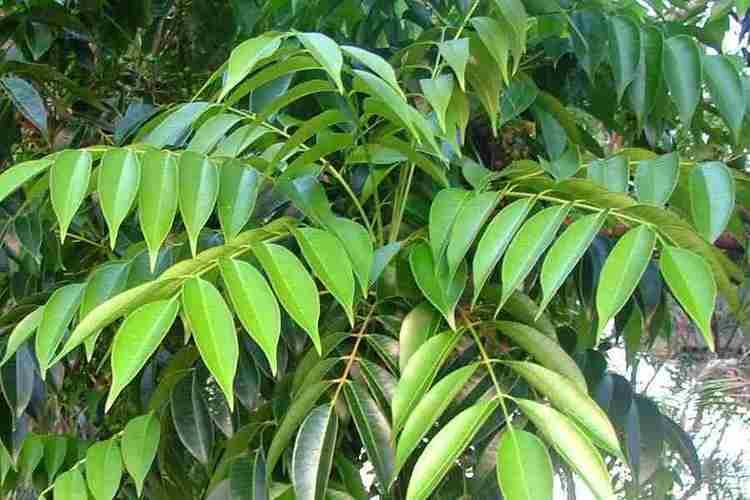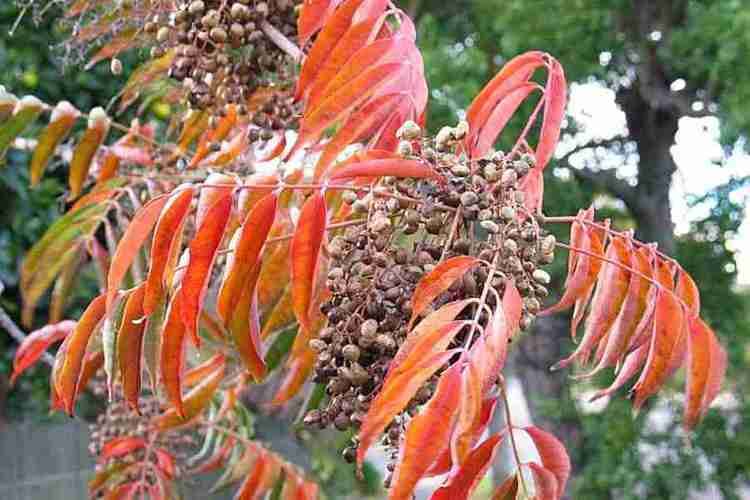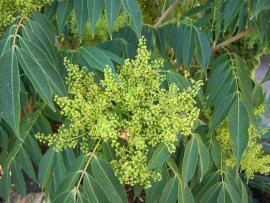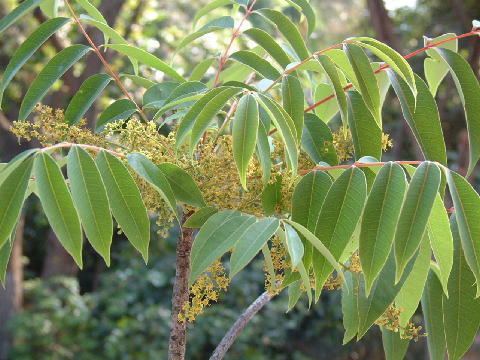Higher classification Poison sumacs | Subfamily Anacardioideae Rank Species | |
 | ||
Similar Toxicodendron vernicifluum, Anacardiaceae, Toxicodendron trichocarpum, Chinese tallow, Rhus chinensis | ||
Toxicodendron succedaneum, the wax tree, Japanese wax tree or sơn in Vietnam, is a flowering plant species in the genus Toxicodendron found in Asia, although it has been planted elsewhere, most notably Australia and New Zealand. It is a large shrub or tree, up to 8 m tall, somewhat similar to a sumac tree. Because of its beautiful autumn foliage, it has been planted outside of Asia as an ornamental plant, often by gardeners who were apparently unaware of the dangers of allergic reactions. It is now officially classified as a noxious weed in Australia and New Zealand. It is one of the city tree symbols of Kurume, Fukuoka, Japan.
Contents

The larvae of the moths Eteoryctis deversa, Caloptilia aurifasciata, Caloptilia protiella, Caloptilia rhois and Callidrepana patrana feed on T. succedaneum.

Chemistry
The plant produces hinokiflavone, a cytotoxic biflavonoid.
Uses

It is used to produce lacquer. In Vietnam, the lacquer is used to produce lacquer paintings, known as sơn mài, from resin of the tree.

In East Asia, in particular in Japan, traditional candle fuel (also called Japan wax) was produced, among other sumac plants, from Rhus succedanea crushed fruits rather than beeswax or animal fats. Japan wax is a byproduct of lacquer manufacture. It is not a true wax but a fat that contains 10-15% palmitin, stearin, and olein with about 1% japanic acid (1,21-heneicosanedioic acid). Japan wax is sold in flat squares or disks and has a rancid odor. It is extracted by expression and heat, or by the action of solvents. The fatty-acid methyl ester of the kernel oil meets all of the major biodiesel requirements in the USA (ASTM D 6751-02, ASTM PS 121-99), Germany (DIN V 51606) and European Union (EN 14214).
It is used as a medicinal plant in India.
The fruits are edible though their consumption is not recommended because of the general toxicity of the plant.


